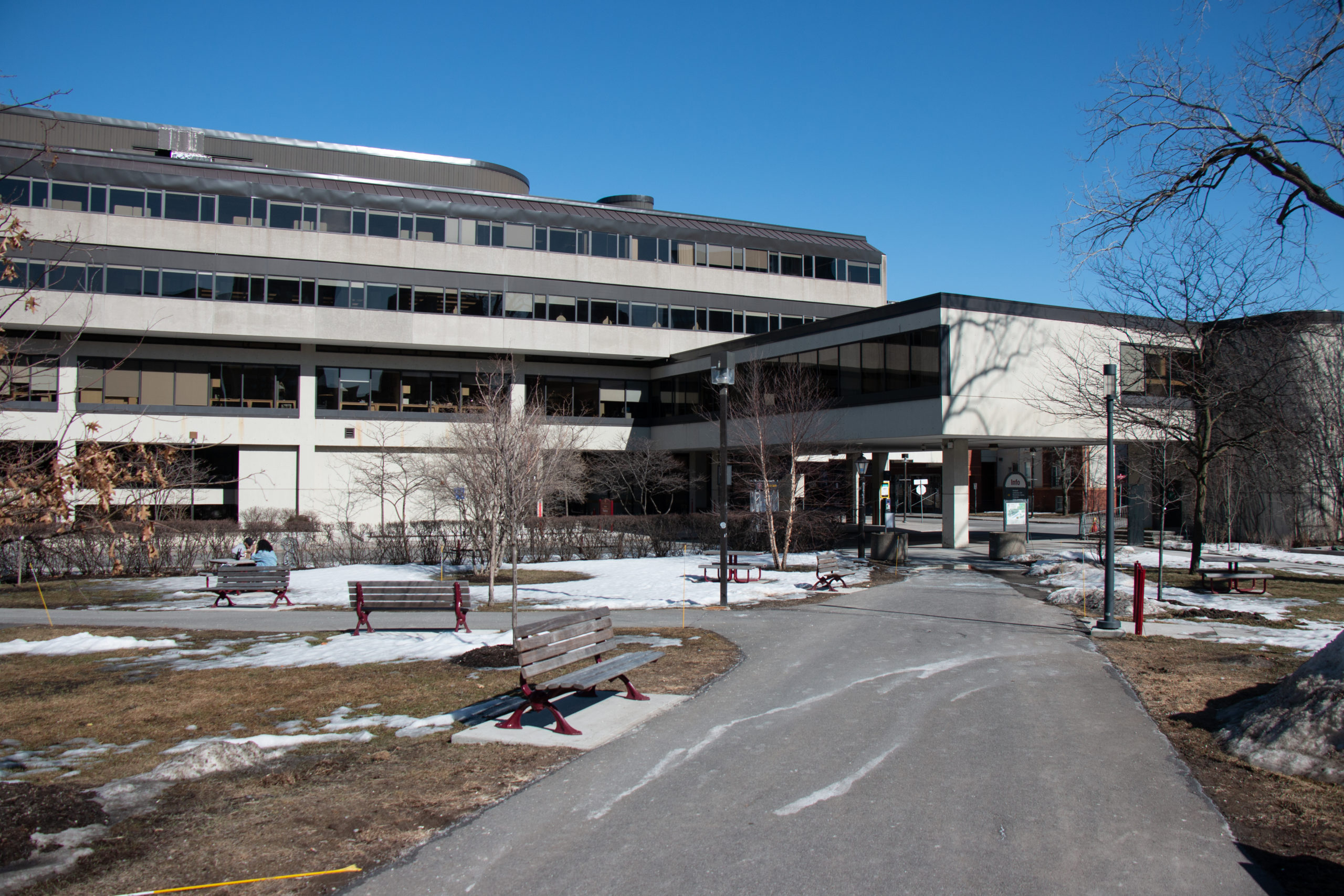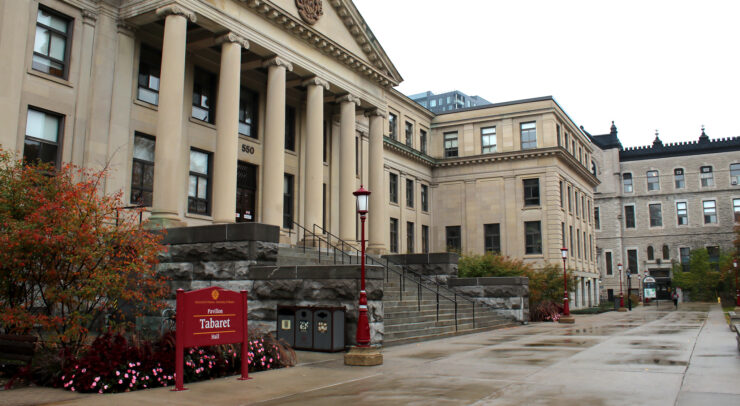U of O centre provided foundational research for the establishment of the Charter
The University of Ottawa’s Human Rights Research & Education Centre (HRREC) played a vital role in the creation of the Canadian Charter of Rights and Freedoms.
The Human Rights Centre at the University of Ottawa came to fruition in 1981, at the suggestion of Yvon Beaulne, Canada’s former ambassador to the United Nations, and with the assistance of Gordon Fairweather, then-chief commissioner of the Canadian Human Rights Commission.
John Packer, director of the HRREC, told the Fulcrum in an interview that the establishment of the HRREC was the product of the conditions of international affairs at the time.
“At the United Nations and elsewhere, human rights was becoming a bigger, much more fuller idea. [Walter] Tarnopolsky was Canada’s independent expert on the UN Human Rights Committee. Part of the idea was to bring Canada’s Charter up to date and to cohere with our international obligations,” said Packer, an associate professor of law and director of the HRREC.
One of the key figures in the origin of the centre was Walter Tarnopolsky, a lawyer and professor at the Osgoode Law School at York University. Tarnopolsky, along with Gérald A. Beaudoin, became directors of the HRREC. Together, they solicited the assistance of many of Canada’s leading constitutional and human rights experts to write sections on the various aspects of the freshly penned Canadian Charter of Rights and Freedoms.
Packer added that Tarnopolsky’s own personal circumstances helped to inform his interest.
“Seeing as how he came from a Ukrainian background, he was quite insistent at the time with progressive ideas in the Canadian context. So language rights, Aboriginal rights, multiculturalism as an idea and equality. He became the first director of the Human Rights Research and Education Center.”
The result of their efforts was the HRREC, which Tarnopolsky was the first to preside over as director. The centre was initially a research entity, but quickly expanded its reach by hosting consultations and drafting documents.
The hard work of the HRREC culminated in a major human rights treaty in Canada, also known as “The Canadian Charter of Rights and Freedoms: A Commentary.” The article, which was published on April 17, 1982, immediately became the foundational research on the Charter and had a significant impact on the Supreme Court of Canada’s interpretation of this constitutional text.
The Centre later produced a second and third edition in both official languages in 1985 and 1993.
The core of human rights protection in Canada is the Canadian Charter of Rights and Freedoms and is ingrained in the Constitution Act of 1982.
The Charter expresses the vision of a unified society founded on equal rights and “fundamental freedoms” for all Canadians. These freedoms include freedom of conscience, religion, thought, belief, expression, freedom of the press, freedom of peaceful assembly, and freedom of association. The Charter also prohibits discrimination based on race, religion, gender, age, or physical or mental disability. It recognizes language rights as well as pre-existing Indigenous and treaty rights. The courts have construed the Charter to protect persons from discrimination.
“[The Charter was created] as an effort of repatriation of our Constitution to bring it fully back into Canadian sovereignty, and finally be entirely independent of the United Kingdom and it became the 1982 Constitution Act. And for the first time, we included a section on human rights called the Charter of Rights and Freedoms. And that was super significant because in the 100 or so years before, we did not have entrenched in Canadian law, specifically human rights provisions” said Packer.
Robyn-Lee Hotte, a fourth-year student in the combined juris doctor and bachelor of social science program at the U of O and the vice-president of advocacy for the Common Law Student Society explained that “the rights [afforded to Canadians] are quite varied but the Charter is structured to clump rights together – Article 2, for example, grants our ‘fundamental rights’ such as the freedom of conscience and religion, free speech. Articles 3, 4, and 5 are our democratic rights, Article 6 gives us our mobility rights, and 7-15 grant us our legal rights such as the right to life, liberty and security.”
Hotte says the most important thing to keep in mind about the Charter is that it’s always changing.
“While the words will always stay the same, their meaning and interpretation shift in time according to “the living tree doctrine” developed in the Persons Case. [And] that these rights are not inalienable like they would be in the United States Constitution. In fact, the very first article of the Charter explicitly states that the rights set out in the rest of the charter can be limited so long as the limits are “reasonable limits prescribed by law as can be demonstrably justified in a free and democratic society.”
Hotte adds that while all democracies have a similar document — although the weight it bears within the state certainly varies — this stipulation makes Canada’s Charter special. “ What makes ours a little special is that … the first article of our Charter of Rights and Freedoms immediately limits said rights and freedoms. [Also] the preamble of the Charter actually states that Canada “ is founded upon principles that recognize the supremacy of God and the rule of law,” she said.
There are a variety of misconceptions about the Charter. For example, Charter rights and freedoms are inalienable. “This is really really false – there are two ways a government can limit your rights: through section 1 (known as the limitation clause) and through section 33 (the notwithstanding clause),” explains Hotte.
Section 1 notes that “the Canadian Charter of Rights and Freedoms guarantees the rights and freedoms set out in it subject only to such reasonable limits prescribed by law as can be demonstrably justified in a free and democratic society.” Accordingly, Charter rights can be limited to protect other rights or important national values. For example, freedom of expression may be limited by laws against hate propaganda.
Section 33’s function is to “prevent a person from bringing an action in court claiming that a law violates fundamental freedoms, legal rights, or equality rights and is therefore invalid. It allows governments to exempt their laws from certain sections of the Charter; but not from democratic, mobility or language rights.”
The federal government has never invoked the clause.
“Another gross misunderstanding of what specific rights mean – for instance, Section 6 [on] mobility rights confers the right to circulate for work and to establish oneself in various provinces though, in the general public, I find that people often tend to think of it as the right to go to the store or go for a drive [when it does not refer to that at all],” noted Hotte.
Another example is when individuals mistook their right to mobility during the quarantine lockdown, thinking they had “the right” to leave the house whenever they wanted, which was not the case.
“There is lots of political debate over the meaning of the rights in the Charter and their interpretation but seeing as the Charter is a constitutional document and it is very hard to modify constitutional documents, there is no real debate as to the actual drafting of it,” said Hotte.
Packer explained that Canadians are unaware that there is no right to health in our constitution and that many of the things we believe are part of our human rights, which may be reflected in norms and conventions, are not included in our constitution. Certain issues, such as supporting bilingualism, are ongoing topics of discussion.
The HRREC, which is celebrating its 40th anniversary, is located in Fauteux Hall. It aims to bring together educators, researchers, and students from various disciplines to tackle human rights concerns from a multidisciplinary and interconnected perspective.
The navigation of human rights and the attempts to enshrine them in national and international institutions remain ongoing. That said, the U of O can be proud that it played a small part in the process here in Canada through the HRREC.





